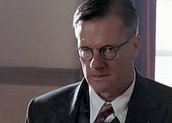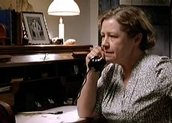

Curtin (2007)
Synopsis
John Curtin (William McInnes) assumes office as the 14th Prime Minister of Australia on 7 October 1941 after patiently allowing the former Liberal Government led by Robert Menzies to implode. Australia, as part of the British Commonwealth, is already at war in Europe, but in December of that year attacks by the Japanese Imperial Army on Malaya, the Philippines and Pearl Harbor with no prior declaration of war, compel Curtin to declare war on Japan. The following months are crammed with disastrous events: Singapore falls and with the British surrender go 15,000 Australian troops; Sumatra, Java and eventually Burma are lost; Darwin is bombed.
With Australia defenceless and the enemy on her doorstep Curtin, in defiance of English Prime Minister Winston Churchill’s demands, orders that the two Australian Divisions currently serving in the Middle East be returned to the Pacific region. These are the troops that were subsequently deployed in New Guinea and elsewhere in direct defence of their own country. None of the myriad decisions Curtin had to make were easy and this film records how his own obsessive personality made them even harder, both to make and to live with.
Only the first six months of his tenure as prime minister is covered here but it does include the return of the troops and Roosevelt’s decision, at Curtin’s behest, to base the High Command of the Pacific War in Australia. Quite apart from their significance tactically, both events are pivotal in the general political and social history of the nation, for they signal the emergence of an independence from British influence and shift towards the United States that has continued unabated ever since.
The film’s epilogue is a ‘rollcall’ noting the significance of these historical events over live footage of Curtin’s funeral in Canberra. He died in office on 5 July 1945, just weeks before the Japanese surrender that brought an end to the Second World War.
Curator’s notes
John Joseph Curtin (1885–1945) is an iconic figure in Australian history. People who don’t even know who he is will have heard the name attached to schools and colleges, universities, hospitals, medical research, electorates and even pubs. This telemovie is a good place to start learning about the man and his times but those looking for depth and breadth of political history and character analysis will be disappointed. The change of name from a working title of Before Dawn to the more specific Curtin flags the producers’ intention to focus closely on the central character’s actions and motives, pretty much to the exclusion of any other.
Furthermore the story told is a mere six months so crammed with incident that what we learn of Curtin’s personal history, let alone that of the Australian Labor Party, is also restricted. Given these limitations the end result is rather like a skilfully painted miniature: small in size and scope but, on closer examination, high on well-researched detail.
William McInnes plays the role of Curtin with characteristic intelligence and commitment. He presents us with the portrait of a man tough enough to take on all manner of political opposition, from Churchill through to the headbangers in his own party, yet made vulnerable by his own obsessions and anxieties including severe bouts of clinical depression and stress-related ill health. It is largely due to this performance that the historical footage of Curtin’s funeral, despite its crackly sound and scratchy black-and-white images, becomes so immediate and so moving.
In fact, the work of the art, sound and music departments, under Jessica Hobbs’s direction, is simply terrific. The opening credits with period effects and old typewriter font plunge us immediately into the early years of the twentieth century. The subtle imagery of turbulent seas in background and the blurred shape of Curtin’s ‘black dog’, both family pet and symbol of his sickness, shows an imagination and innovation that is consistent throughout the production.
The use of old postcards to mark changes of location and the passage of time is inspired, as is the choice of Billie Holiday’s rendition of 'My Man’ for the epilogue. There are some anomalies, such as the décor of the prime minister’s office, which is the 1970s refurbishment that can still be viewed by the public at Old Parliament House today, but none are intrusive. The period on the whole is remarkably well conveyed and much careful thought has been given to smoothing the passage of occasionally disjointed anecdotal episodes.
In this respect, the decision to use direct-to-camera monologues is an interesting one, prompted perhaps by the concern that the audience would miss some critical point in the profusion of incident presented to us. However, it is a device that can intrude on the drama rather than enhancing it. For example, I found it detracted from the moment to be told I was watching ‘history in the making’ while, in background, Curtin announced Australia’s independent declaration of war on Japan. The acting, direction and dialogue leading up to this scene had already made it quite clear that this was an important, nation-defining decision. On the other hand, when used to access Curtin’s innermost thoughts, the monologues do make good dramatic sense.
First aired on the ABC in April 2007 this feature-length television production was originally intended to be a mini-series four times as long. With the final version reportedly coming in at an estimated $2 million AUD, no doubt budgetary considerations influenced the change of plan. It won a well deserved ASSG Award in 2007 for its sound team headed by Colin Jones, a Silver Logie for Best Telemovie or Mini-series in 2008 and was nominated in the Best Made-for-TV Movie category at the Banff Television Awards.
- Overview
- Curator’s notes
- Video 2 clips
- Principal credits
- Find a copy
- Make a comment
- Map
- Add your review



